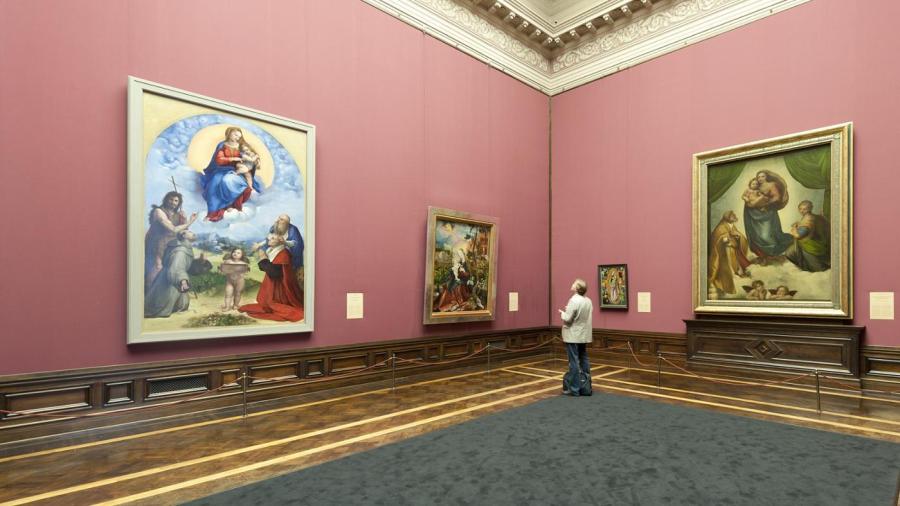What Was the Importance of Raphael’s Contribution to Renaissance Art?

The importance of the Renaissance painter Raphael Sanzio is that his paintings went beyond the previous work of his contemporary, Michelangelo, by combining subtleties, a greater clarity of form and softer shading to create a more realistic rendering of his figures. He also infused his own sense of grace into his figures and avoided the air of tension often found in Michelangelo’s depictions. Raphael’s work is known and admired for his ability to visually capture the Neoplatonic and Renaissance ideal of human grandeur.
The work of Raphael, along with that of Michelangelo and Leonardo da Vinci, represents an expression of the philosophical outlook of the period of time between the late 15th and early 16th centuries known as the High Renaissance. Raphael’s best-known work is arguably the wall fresco “School of Athens.” In this work, the artist depicts the seven liberal arts: dialectic, rhetoric, music, arithmetic, geometry, astrology and grammar. This large and complex composition is regarded as one of the greatest works created in the grand manner of the High Renaissance.
Although his influence was overshadowed by his contemporary Michelangelo during his time, it was generally held by the mid-16th century that Raphael was the ideal balanced painter whose work satisfied all standards and obeyed all of the rules accepted as governing the creation of art. Raphael’s greatest influence on other artists came during the late 1600s to the late 1800s during which time his perfect sense of balance and decorum were highly admired.





